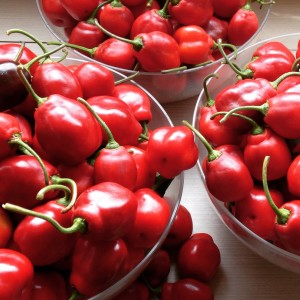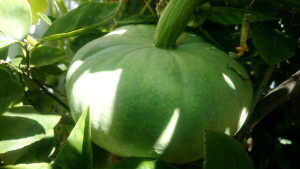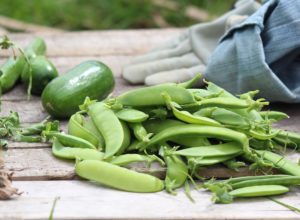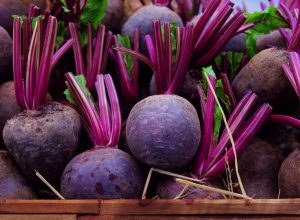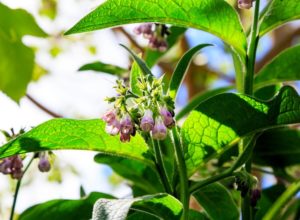Our Garden Guides are now all in the one place! Click the link below to jump to the guide for your climate area for March.
by Kathleen Hosking of Solution Focussed
WHAT TO PLANT?
• The wet season hasn’t really started yet so it is best to just plant green manures and greens for the moment.
• You can try a few tomatoes which may grow. The Pink Thai egg tomato and tropic do best in the humid and hot conditions. The most productive plants in my garden are those that grow themselves in their chosen position.
• This time last year I transplanted a sapodilla and it has survived. I used the deep stem planting technique for wind tolerance and protection.
• The mainstays for this time of the year are the perennial greens such as sweet leaf, Kangkong, Okinawa spinach, sweet potato tops.
MAINTAINANCE
• In the hot humid weather of March the mulch breaks down very quickly so keep mulching
• Continue to work on swales and drainage as there could be a lot more rain yet. We have not had a wet season this year, just some heavy rain events then back to high temperatures and high humidity with effective temperatures of 40 deg. C.
• Do not leave any areas exposed as they will cook in the sun. A groundcover of weeds is preferable to bare soil.
WEEDS, PESTS AND DISEASE
• Continue weeding and mulching
• It is fabulous to see the many small birds at work hovering and chasing the bugs.
HARVEST AND PRESERVE
• Harvest taro, cocoyam’s, celery top taro, sweet potatoes and cassava as required.
• The yard long beans are starting to produce a cop so keep harvesting daily to prolong flowering and fruiting. The yard long beans will grow well in the heat and humidity
• Harvests available this month include bananas, longan, passionfruit, soursop, corn, pumpkin, limes, dragon fruit, chillies, coconuts, pumpkin fruits, shoot and leaves.
PERMACULTURE PRINCIPLE NO 3: OBTAIN A YIELD
• Why else would you work?
• Everything I do needs to provide at least three yields. The West Indian arrowroot (Maranta arundinacea) is probably the least useful plant in the garden but it provides (1) a silt trap when planted along the edge of an area, (2) it is aesthetically appealing as a green filler, (3) it provides an edible tuber which is not very palatable to the western palate as it is fibrous, (4) it will live under water for a few days and so it is a store of survival food.
• I allow plants to self-seed and grow to harvest with little or no input from me. Tomatoes, amaranth, fat hen, taro, cassava, Ceylon spinach all do this and are gratefully harvested to eat or to provide stock for the plant stall.
• My self-employment allows me to work from home which increases the yield from the house, uses pre-existing skills which have been developed over many years and provides a balance having one emotional and one physical element to my employment. It also allows me the flexibility and the independence which are essential for my peace of mind and wellbeing.
• Harvesting the weeds provides mulch as well as physical exercise and stretching and time to zone out and absorbs the energy from the garden while keeping an eye out for edible plants which are growing in the weeds.
• The work that I do and the actions that I have taken over the years have all been geared to obtaining a yield, whether it is water stored in the soil, electricity generated from the sun, or income generated from growing and harvesting things or from my personal effort.
March in the cool temperate garden
by Christina Giudici of Food in My Backyard
WHAT TO PLANT?
Cooling weather (although we’ve had some real scorchers of late, AND snow on the high country) shorter days, the Autumn equinox: March is something of a transition month in the productive garden. Many summer vegies are starting to look pretty tatty, even though still churning out their bounty.
Its still a good time to plant brassicas, as seedlings. Give the soil (and plants) a good feed of compost or organic fertiliser at planting, and then some foliar feeding of worm or comfrey tea while we still have some warmth in the soil and air.
Its also still a good time for vegies that need a long growing season, or that can manage winter, like leeks, parsnips, celery, Florence fennel, carrots, beetroot, turnips, silverbeet.
A truly Autumn / Winter group of vegies to consider planting, later in March, are broad beans and peas, and English spinach. Plant seed rather than seedlings, as you’ll have access to a greater range of varieties, and will get stronger plants. English spinach often bolts to seed when stressed, so definitely don’t buy seedling punnets of this one. It loves lime too, so sprinkle some lime and rake in a week or two before planting if you’ve had trouble with this one in the past.
I always scatter coriander seed around when I plant peas. There is often a gone-to-seed coriander plant lurking somewhere in the garden, so you can simply pick the dried seed from the old plant, and scatter it next to your peas, for a happy and productive relationship to flourish.
MAINTAINANCE
- Clean up mildewy or dried up leaves, and as you pull out finished summer vegies and weeds, chop them up and make compost. Make a nice big heap, and water it well as you build it, for best results.
- Try to keep on top of the weeds and grass around the place so that they don’t set new seed. If you haven’t time for a thorough weeding session, at least break or cut off any developing flower or seed stems, and throw them to your chooks to eat any seeds, or into a bucket of water to become sludge before they’re used in compost.
PESTS AND DISEASE
- Young brassicas are still vulnerable to the cabbage white butterfly. Take direct action (squishing the grubs) or spraying with a biological control agent like Dipel, or protect your seedlings with a barrier such as growcover or fine netting, which keeps the adult insects away from the plants.
- Citrus trees can be affected by scale – if you see sooty mould and ant activity on the tree you probably have it. Treatment is to suffocate the scale insect with white oil or a home made alternative. You need to target the pest on the underside of leaves and small branches, and spray thoroughly a few times over a week or two. DON’T spray white oil when the temperature is above about 25 degrees.
HARVEST AND PRESERVE
- Potatoes can be harvested as needed, by ‘bandicooting’ if the vine is still growing, or by digging the whole buried treasure if the vine has died back. Any little escapee potatoes, even a centimetre across, will grow into a new vine eventually. So if you want to grow something else in your ex-potato patch, be thorough with your harvesting. To store potatoes, DON’T wash them. Brush off any really cloddy bits of soil, and spread out in a dark room on some newspaper for a few days to dry / cure the skin. Then keep them in paper bags or a box that can breathe in a dark cool place.
- If you’re still overwhelmed with preserving, consider making fruit syrups or jellies. Its easy – cook up the fruit with a bit of water until all is soft. Drain through a colander lined with muslin (or clean chux cloth), then mix the strained liquid with sugar to taste (usually about 1 sugar to 3 fruit syrup by volume). Bring to the boil, stirring till sugar is dissolved. Bottle straight away for syrup, or cook a bit more until ‘setting point’ is reached for jellies. Sometimes the pulp left over after draining can be put through a food mill, then some sugar added, and be cooked up to make fruit paste. Two outputs for the price of one!
- Harvest beans that you’ve grown for seed (eg borlottis) when the pods are dry and papery on the bush. Any beans can be used this way, so even your green French beans, butter beans or purple kings that got a bit big and tough for fresh eating can be left on the vine to dry, and yield seeds to be stored and used in winter soups.
PERMACULTURE PRINCIPLE NO 3: Obtain a yield
- If you’ve had summer brassicas, you may have some gone-to-seed broccoli or kale or radish plants around the place. The flowers are delicious! The seeds (if you don’t eat all the flowers) can be collected when dry and used to sprout as microgreens. The plants with scraggly seed heads can become something of an aphid and cabbage white grub decoy trap, which when pulled up and thrown to the chooks become a protein source. The final leftover plants, after all these successions of yields, can be chopped and become food for worms or compost creatures. Thank you abundant brassicas!
- If your milk goes off, don’t tip it down the sink with a grimace. Put it on a sunny windowsill in its carton, and let it get really chunky over several days. Then take it outside and pour the curds out for your chooks – they love it, and it’s a great protein source. Same goes for yoghurt.
- Keep your eyes out for wild harvests at this time of year. Blackberries are ripening all over the place, perhaps even in a neglected corner of your place. They should be controlled, but pick the ripe fruit first! They beautifully complement apples that are ripening in abundance now too. The new soft growth on blackberries is also good food for many animals – our rabbits LOVE it.
March in the Mediterranean Garden
Nadja Ostertock of Nadja’s Garden
I think we’ve reached the turning point. Time to turf out the finished summer veg (by which I mean hot compost them into nutritious garden goodness), renew the soil and get some autumn goodies going into the patch.
Here I have mountains of fruit tree prunings and bags of local horse manure waiting to form the carbon + nitrogen basis of my hot compost. The finished zucchini and tomato plants, corn husks and stalks, kitchen scraps and coffee grounds, along with some dynamic accumulators like comfrey, dandelion and borage, will help to round out the mix of nutrients, along with any hair and toenail trimmings, dust from the floors, shredded newspapers or cardboard packaging – anything that once lived, and that I can cut small enough to break down quickly! Then it’s a matter of mixing and containing all the ingredients in manageable heaps or bins, and keeping them both moist and aerated, preferably by turning a couple of times a week under a showering hose, until the whole lot is a broken-down, unsmelly, black, moist, delicious chocolate cake.
I will leave out of my compost the pumpkin vines that want another month or two to finish ripening their load, the eggplant, capsicum and chili plants that will bear again for another summer or two, the asparagus tops that haven’t yellowed yet (so they can store all the remaining goodness in their roots) and anything that’s too chunky for me to easily chop into pieces the size of a fat strawberry. I don’t like using a noisy mulcher, so some branches will be just be broken up a bit and used as chop’n’drop mulch under the native shrubs.
Planting:
Most brassicas, root vegetables and salad greens are reliable growers now, and if they have a chance to put on some good growth before the soil cools down, they will provide a greater overall yield than if planted later. Sow broccoli, cabbage, kale, and kohlrabi. If pak choi and radishes are grown between them when transplanted to their beds, these will mature for an earlier harvest and then leave room for the larger brassicas to grow. For root vegetables try beetroot, carrot, parsnip, swede and turnip. Fresh seed is by far the best, and mixing carrot seed with sand helps with more even distribution. Sow these direct rather than transplanting, for strong taproots. Early garlic can also go in this month. Seasonal salad greens include endive, lettuces (I always favour loose-leaf types that can be picked from the outside over months), mizuna, radiccio, rocket and spinach – and add colour and flavour to those salads with calendula petals and herbs such as parsley, coriander, basil and chives.
Featured Permaculture principle: Obtain a yield
Sometimes gardening is about working now to achieve long-term goals; sometime it’s about just enjoying what you have or what you find! Having finished eating and preserving most of our summer fruits, we suddenly found ourselves on the receiving end of many other people’s surplus fruits – figs, peaches, bananas and more figs for example! Accepting these gifts and incorporating them into our breakfasts for several weeks was a welcome opportunity to rest up a little and get refreshed ready for the next round of planting, while saving our preserves for the cooler and less fruity months
Nadja Osterstock – find Nadja’s Garden on facebook, email nadjasgarden@gmail.com,
ph. 0410 636 857, website and blog at www.nadjasgarden.com.au
Visit at Organic Corner Store market and at the Permaculture SA tent at Womadelaide.


